Tapping Into The Slime Mind
From ant colonies to single-celled slime mold, biologist Audrey Dussutour explores the wonders of animal cognition.
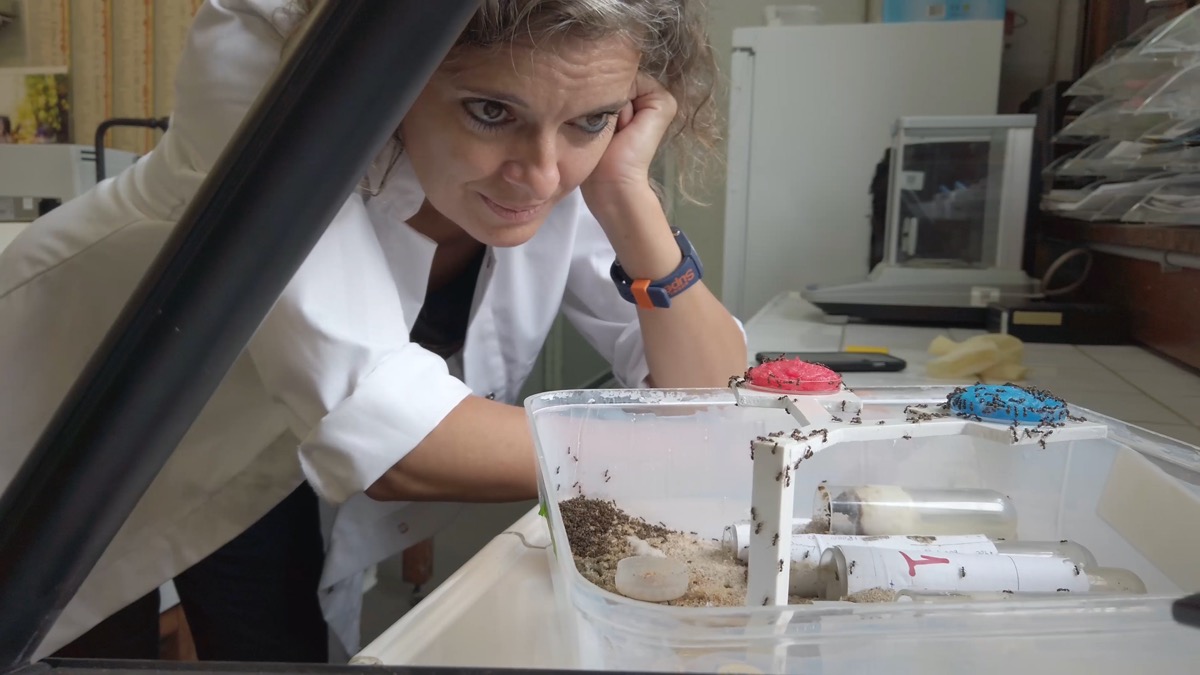
This article by Max G. Levy was originally published on Massive Science. The story is a part of Breakthrough, a short film anthology from Science Friday and Howard Hughes Medical Institute (HHMI) that follows women working at the forefront of their fields. Learn more and watch the films at our Breakthrough spotlight.
Audrey Dussutour is not shy about admitting that her career, and fame, is a bit of an accident. The French specialist in animal behavior didn’t set out to make discoveries about slime minds, or to write a hugely popular book (Le Blob) about the single-celled learners. “It was not my wish to work on slime molds at all,” Dussutour told Massive, letting out a slow sigh. The first time she saw the organism, as a postdoctoral fellow in Australia, she thought, “My gosh it’s really disgusting. What can I do with this thing?”
Dussutour radiates an infectious passion for slime molds. “It’s one of the most interesting systems to study because it’s a single cell, but you can actually see it with your naked eye,” she says. Now a researcher at France’s National Center for Scientific Research, Dussutour studies how ant colonies and patches of slime molds—neither of which have a central brain—can make decisions with distributed intelligence and emergent plasticity.
She recently spoke with Massive Science about slime molds, cognition, and how science seeps into society. Our conversation has been condensed and edited for clarity.
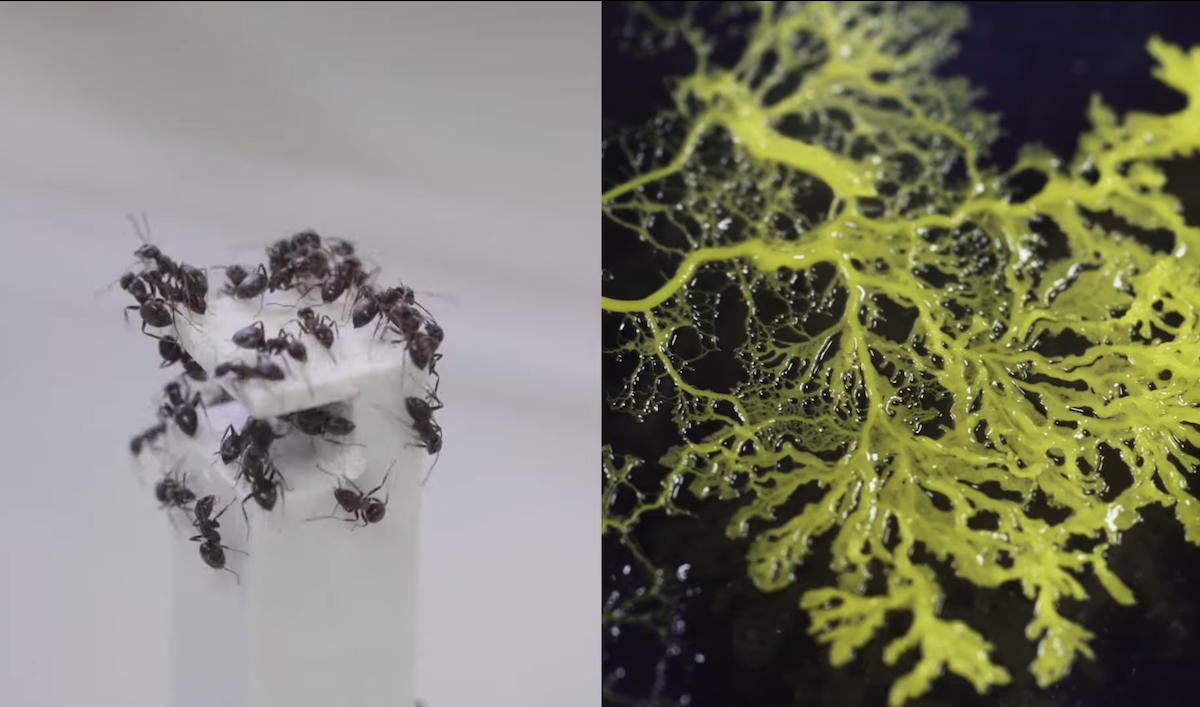
Audrey Dussutour studies intelligence found in nature, from ants to slime molds. Credit: Science Friday
When you write about ants or slime molds learning, you use terms like distributed intelligence and emergent plasticity. What does that mean?
Emergent plasticity means that it’s not coded by the unit, it can emerge from the interaction of the subunits of the system. So in essence, you have intelligence that emerges from the group that is not coded at an individual level, but emerges because of the collective. And in slime molds it’s the same because you will not find a centralized part of the cell that directs the behavior. It’s everywhere and nowhere at the same time. So it’s really difficult to study. So far, we don’t exactly know how slime molds make a decision. For instance, you can see when you look at the behavior that sometimes it changes its mind or something like that, but you don’t know where it happens and how it happens exactly.
Changes its mind?
Yeah. In fact, The first time you will see a slime mold, you’re gonna be very disappointed because people are saying crazy stuff about slime molds, everything they can do, and that they’re so smart.
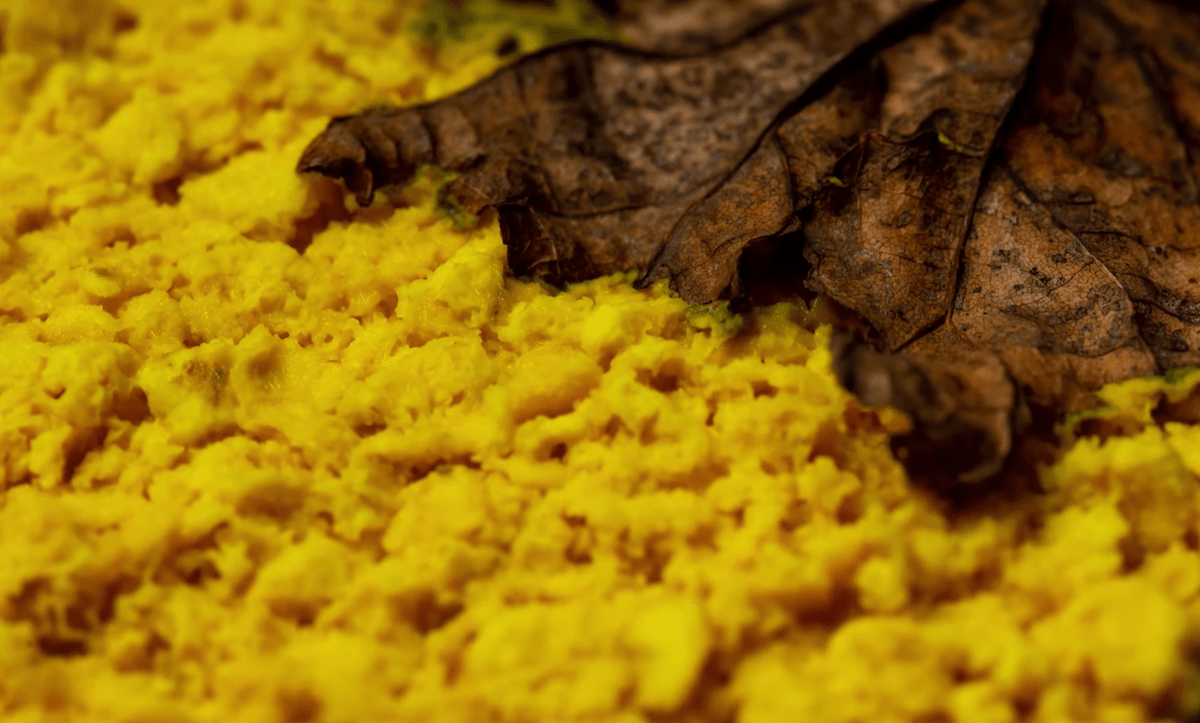
But when you actually see it, it looks more like scrambled eggs. As soon as you videotape it, and you record its behavior it suddenly looks super interesting. When it’s running around the petri dish, when the experiment is finished, sometimes you project yourself on the slime mold like, “Oh my gosh, it’s bored so it’s going around the petri dish.” It’s funny how at one point it becomes like a pet. It’s not a kind of slimy stuff that looks like a fungus. For me, it’s more like an animal.
I find it’s as interesting as ants, for instance. While the complexity is far different. But slime molds, they escape sometimes. You will find them in weird places in the lab. So it’s always fun, it’s super surprising. And you wouldn’t expect to be surprised by mold.
It’s multi-nucleated, meaning that you have lots of nuclei. So it means that the genetic material is everywhere. So you can cut pieces, you always have at least one nucleus, I mean, you always have thousands of them. They’re clones, they’re part of the same cell from the beginning. But when you separate them, and you put them in different petri dishes, with the same problem to solve, you will always have one weirdo who will do very different from the others. And so it’s funny how we kind of get the kind of individuality as soon as they’re separated from each other.
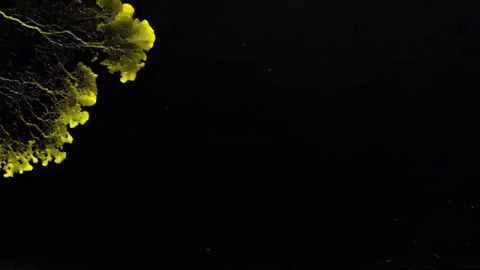
Do you interpret that as a kind of personality?
[Laughs] I wouldn’t use personality because people would be very upset. So we call it individual differences, but it means a bit of the same. So, for instance, in the lab we have slime molds that come from different countries. They’re still Physarum polycephalum. They belong to the same species, but they’re different individuals. You can see that there are huge differences between them. I can even smell that they smell different. They look the same yellow, but I can recognize them by smell, and I can recognize them by behavior. You know, I don’t have to have a label saying, “Oh, this is American slime mold.” I know straight away it’s American slime mold or if it’s an Australian one, because they don’t have the same behavior. I mean, in average, they are the same of course. But for some difficult choices, they wouldn’t have the same strategy.
“It’s super surprising. And you wouldn’t expect to be surprised by mold.”
At the beginning when I was working in Australia, everybody was working on Australian slime mold. And I thought it was weird to work on a single individual cut into pieces. I thought, “Oh my gosh, if you have a special one, or a dumbo and was super smart, you would never know if [your results] extend to all the slime molds.”
So I kind of looked around and the only one that I could get was an American one. And so I bought it. I bring it into the lab. And it was very funny because I was feeding my Australian slime mold with organic oats. And I gave it to the American one and it said, Bleh and went away and didn’t even eat. So after that, I bought some crackers and it loved it. So I’m like, “Oh my gosh, doesn’t like organic food.” It was funny because it was American.
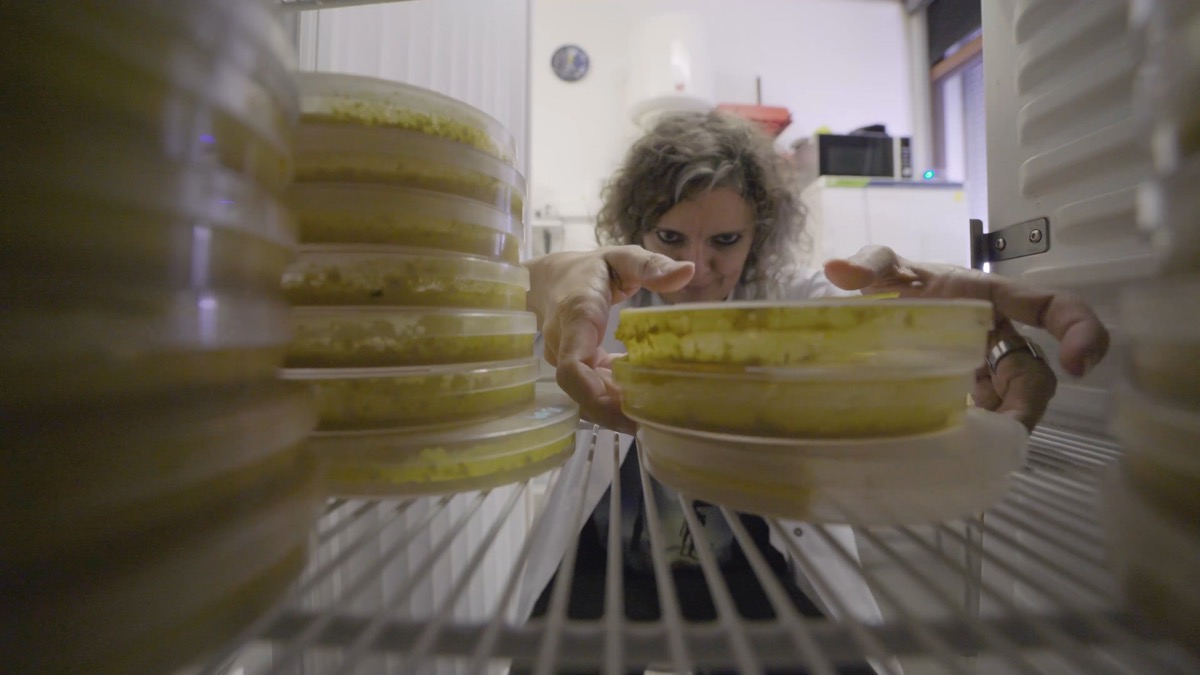
Credit: Science Friday
So does this mean that you’re firmly part of Team Slime Mold?
No, I just finished a book on ants, and I still have students working on it. OK, ants are super interesting because they manage to do things that are incredible. We can learn a lot from them. What I like in ants is at the collective level. In slime molds you don’t have a collective because as soon as you put some many slime molds in the same dishes if they’re identical but just fuse and make one so you will never have a collective they’re just always like “Oh, friend! And I fuse.” With ants, it’s a collective so you can really really play with them as a collective.
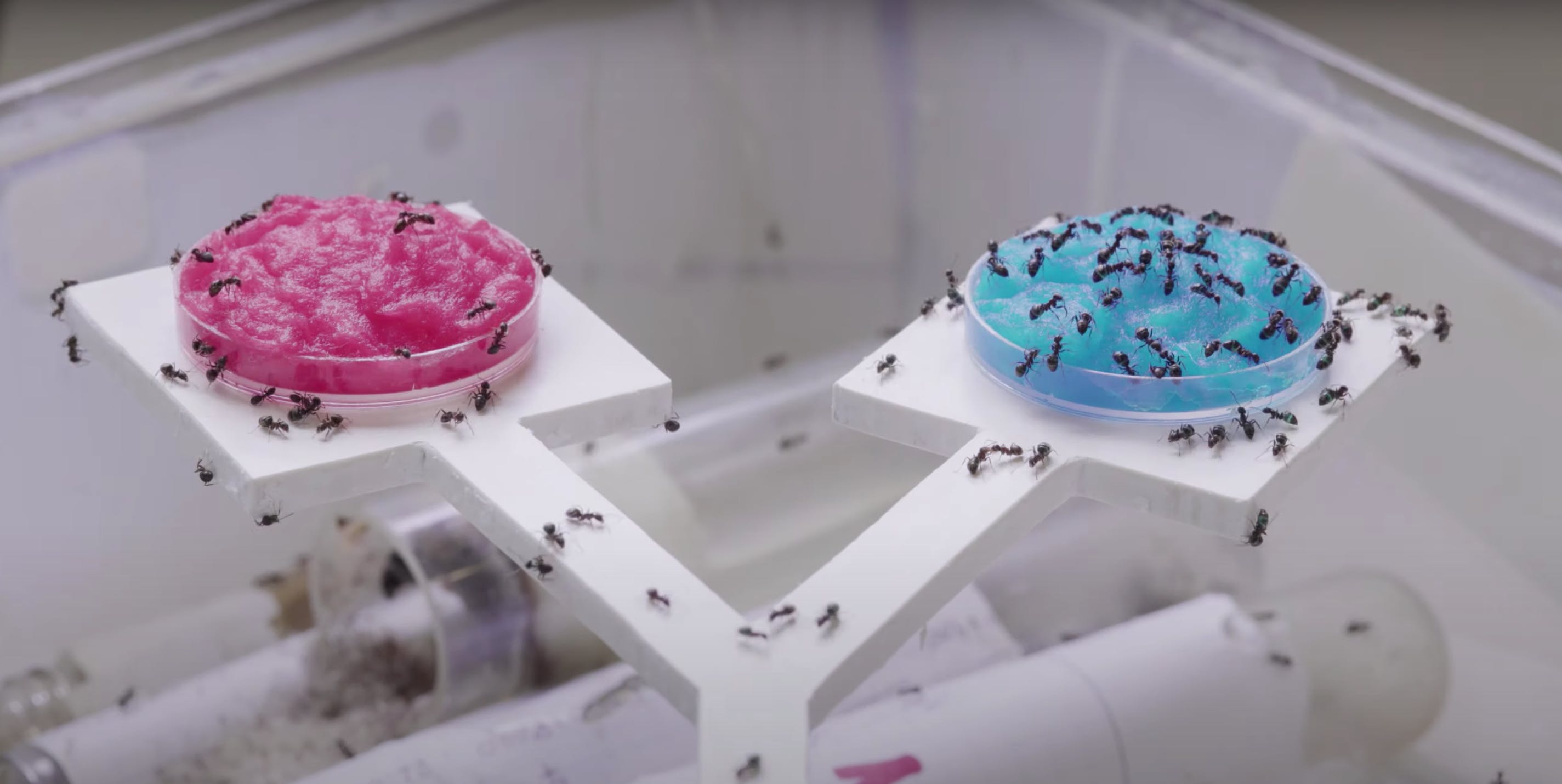
Have slime molds changed how you think about your own brain and cognition?
A bit. You know, we’re very focused on the brain in humans and in animals, and on neurons. But in fact, slime molds are just showing you that if a single cell can learn, so what about your epithelium? What about any kind of cells you have in your body? A lot of people are thinking about the second brain, which is the digestive system. And it’s possible that a lot of our other cells are super interesting, too. Slime molds show that even at the single cell level, you can encode information. The immune system I think looks like that a bit, because your immune cells are storing information about viruses and bacteria that they have met before. So, yeah, I guess it changed. I didn’t know that an organism like that could be interesting when I started my studies.
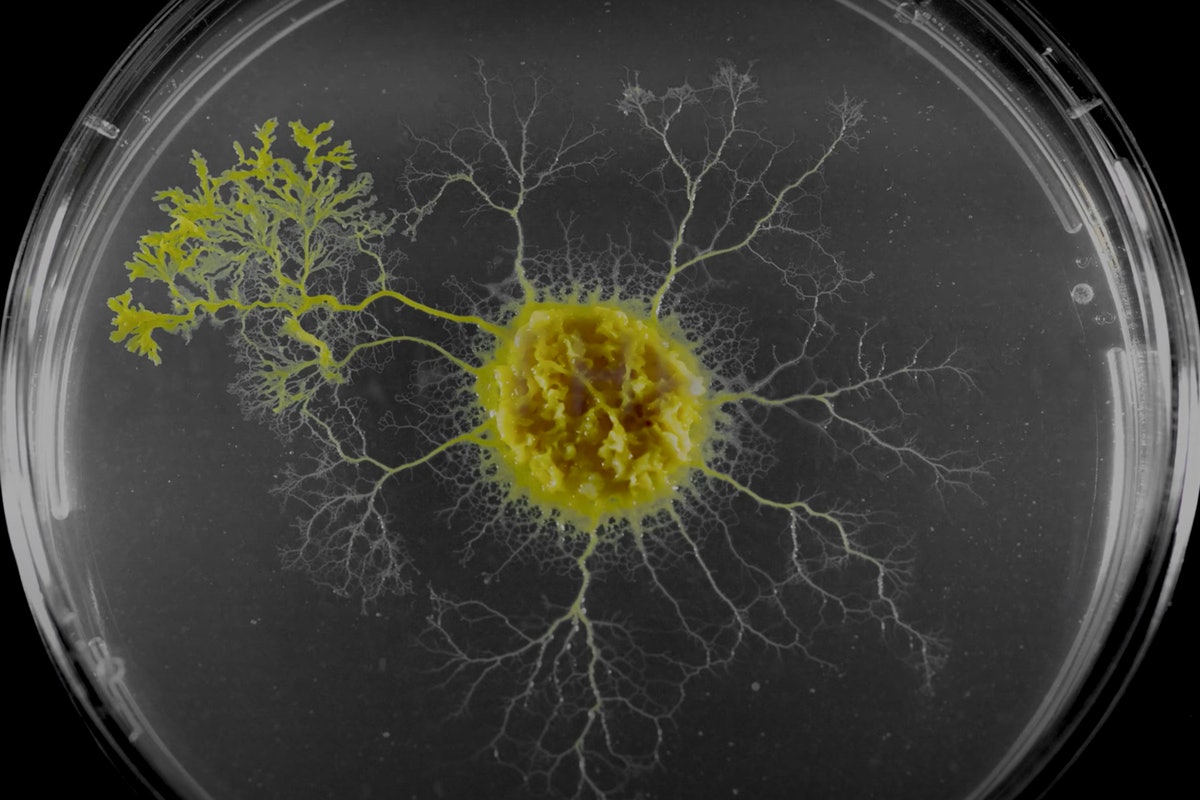
Credit: Audrey Dussutour/Science Friday
Oh really? So what were you thinking when you first started working with slime molds?
[Sighs] it was an accident. It was not my wish to work on slime molds at all. In fact, I was working in Australia, I was studying ants, and I was studying nutrition. And my supervisor was writing a book about nutrition and he’d been applying this new framework in nutrition to all kinds of organisms—on locusts, on ants, on humans, on mice, on any kind of organism. And he was saying it’s good from insects to humans, but it would be far better if it went from cells to humans. So we dig a bit into it. And we noticed that one person in the university actually had slime molds. So we asked her if she could give us one sample. I will always remember that she brought this kind of container like a Tupperware and was full of slime molds—so scrambled eggs for me. And I looked at it and I said “My gosh it’s really disgusting. What can I do with this thing?” So I just put it in my drawer, and I completely forgot about it. And in the morning after it was everywhere in my drawer. And so I went back to my supervisor, and I’m like, I think we can do something with this organism… because it moves, I didn’t really expect it to move. And it worked so well, the results were amazing. We did this great publication, and so [my supervisor] said, my gosh, I think this organism is the future, we should keep it.
So when I left to work in France, I took some slime molds. All my students wanted to work on ants because they didn’t find slime molds interesting. In France, nobody knew about slime molds, so they were not interested by that. So I managed to find a student who was super interested, so we managed to publish a lot of publications.
“Slime molds show that even at the single cell level, you can encode information.”
And how did the book come about?
An editor in France contacted me to write a book about slime molds, because in France, I didn’t know what it was. And so I wrote this very popular book. The Blob (Le Blob). And I had to call it something, because she said, “What’s the name of this thing?” And in France, we didn’t have a word for slime mold. So we had to call it Physarum polycephalum, which is really, really… nobody could remember this thing.
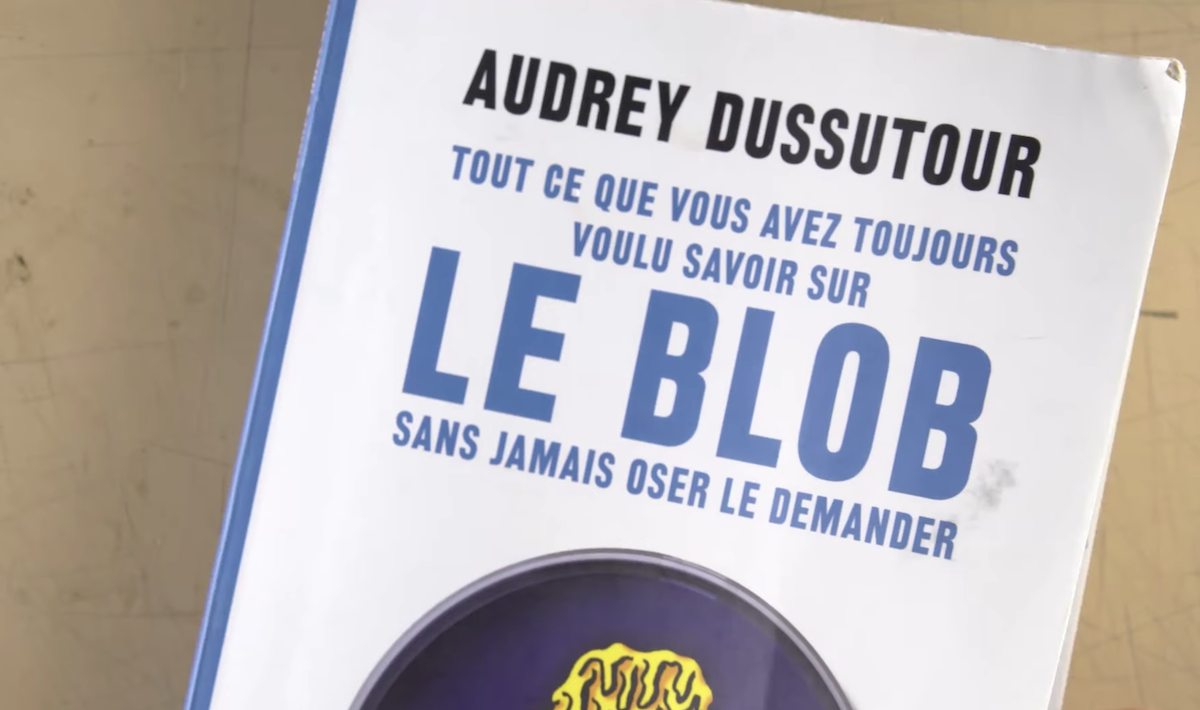
And so the editor said, do you have a nickname for it? And I say, “I always call it ‘The Blob’ in the lab” and she said, oh, let’s call it like that. So we would make the book with The Blob. It became kind of popular because people thought it was weird. And it got in the zoo in Paris, so it got even more popular and now The Blob is a new word in the dictionary in France. So it’s very funny. I received a letter from the Larousse which is the French dictionary, saying that it was part of the 10 new words this year. And they said “The Blob—an organism that is a fungus.” And I’m like, ‘I’ve been saying that it’s not a fungus!’ So they got the definition wrong, but it’s still in the dictionary now.
So it’s how I got into slime molds. At the beginning it was an accident and it became like, something that I didn’t really control. So it’s funny. It’s exactly like The Blob. Because, the success of The Blob, I didn’t control it, I didn’t expect it. So I was not ready.
So you’re saying the success of The Blob grew like a slime mold?
Yeah, exactly. Because it’s everywhere. It’s not just the zoo, it’s people in schools who wanted to work on slime molds. Artists, I have been contacted by lots of artists to paint slime molds. Some people want to take pictures of them. It’s everywhere and now they want to get it in the International Space Station. So I think the Blob will never stop. I think it’s not me, it’s now self organized. I’m not in charge of anything anymore.
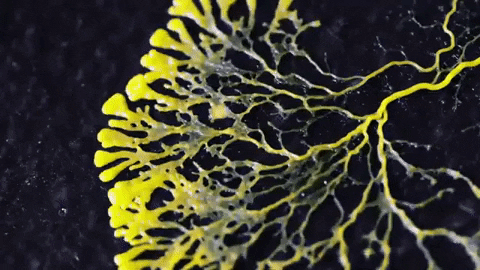
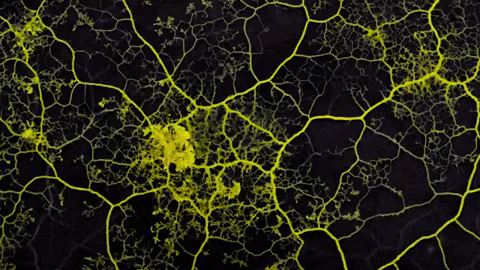
The slime molds do seem visually striking. Do you see the crossovers between art and science as important?
Yeah, I’ve always thought that the way an artist thinks and the way scientists think is a bit the same. I mean, there’s an investigation part also. And so I never struggled to talk with an artist—I understand what they mean usually. We understand each other quite easily. And usually also teach me new techniques because they have more time to explore with the slime molds than I have. And even with schools, for instance, with kids. You get ideas from kids, because they’re always completely open and they will ask you crazy things.
Invest in quality science journalism by making a donation to Science Friday.
Max G. Levy is an assistant editor and science writer at Massive Science. He has a PhD in chemical and biological engineering.